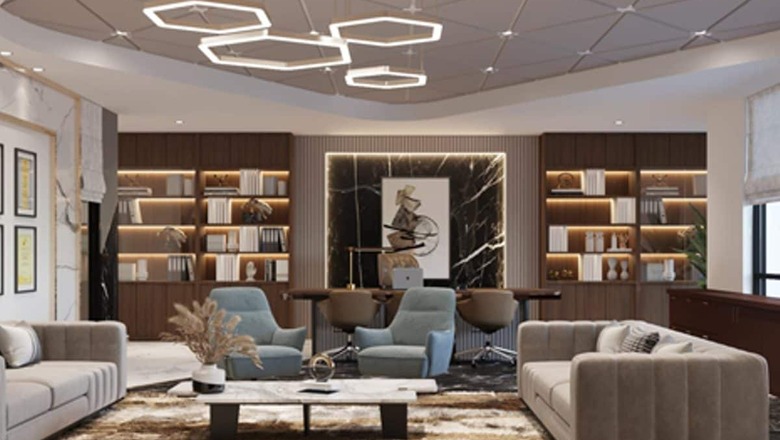
views
Commercial interior design is a specialised field that requires a delicate balance between aesthetics and functionality. It is the art of creating environments that are not only visually pleasing but also serve the purpose of the space. Whether it is an office, retail store, restaurant, or hotel, commercial interior design plays a crucial role in creating a space that is inviting, functional, and reflects the brand identity. Kunal Sharma, Founder and CEO of Flipspaces highlights the role of commercial interior design in various settings, such as offices, retail stores, restaurants, and hotels.
- Aesthetics and functionality go hand in hand when it comes to commercial interior design. Aesthetics are important, as they create a pleasing atmosphere that can attract customers and leave a lasting impression. The use of colours, materials, lighting, and furniture all contribute to creating a visually appealing space. However, aesthetics alone cannot guarantee the success of a commercial space. It is equally important to ensure that the design is functional and meets the needs of the users.
- Functionality encompasses various aspects such as traffic flow, spatial planning, and ergonomics. In an office setting, for example, the layout should be designed in such a way that it promotes collaboration and productivity. The placement of workstations, meeting rooms, and break areas should be carefully considered to optimise workflow. Similarly, in a retail store, the layout should encourage customers to explore the space and easily find what they are looking for. The functionality of the space should never be compromised for the sake of aesthetics.
- To master the art of commercial interior design, designers must strike a balance between aesthetics and functionality. This requires a deep understanding of the client’s needs and goals for the space. By conducting thorough research and analysis, designers can identify the specific requirements of the project and develop a design concept that meets both aesthetic and functional criteria.
- The selection of materials and finishes is crucial in achieving this balance. For instance, durable and easy-to-clean materials are essential in high-traffic areas such as restaurants or hotels to ensure longevity and maintainability. At the same time, these materials should also contribute to the overall aesthetic appeal of the space.
- Lighting is another important aspect to consider in commercial interior design. It not only enhances the visual appeal but also plays a significant role in creating a functional environment. Proper lighting can highlight key features or products, create different moods, and improve visibility in work areas. Designers must carefully choose lighting fixtures that complement the overall design concept while providing adequate illumination.
In conclusion, commercial interior design involves finding the perfect balance between aesthetics and functionality. It requires careful planning, research, and consideration of the client’s goals and needs. By creating spaces that are visually appealing while also serving their purpose effectively, designers can ace the art of commercial interior design.
















Comments
0 comment